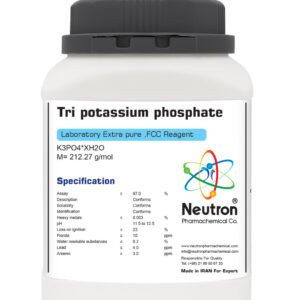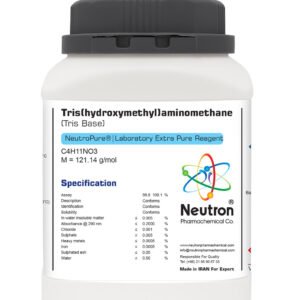ان ان دی ایزوپروپیل اتیل آمین
| Chemical formula | [(CH)CH]NCHCH |
| Molar Mass | 129.24 g/mol |
| CAS Number | 7087-68-5 |
| HS Code | 2921 19 29 |
| Storage | Store below +30°C |
| SDS | available |
| RTECS | HZ8750000 |
| Explosion limit | 0.7 – 6.3 %(V) |
| Flash point | 9.5 °C |
| Ignition temperature | 240 °C |
| Boiling point | 127 °C (1013 hPa) |
| Density | 0.76 g/cm3 (20 °C) |
| Melting Point | <-50 °C |
| pH value | 12.3 (HO, 20 °C) |
| Vapor pressure | 14 hPa (20 °C) |
| Viscosity kinematic | 0.88 mm2/s (20 °C) |
| Solubility | 4.01 g/l |
| Appearance | Conforms | ||
| Identification | Conforms | ||
| Color | ≤ | 20 | Hazen |
| Water | ≤ | 0.3 | % |
| Purity | ≥ | 99.0 | % |
N,N-Diisopropylethylamine (DIPEA) is a bulky, non-nucleophilic tertiary amine widely used as an organic base and catalyst in chemical synthesis.
🏭⚗️ Production
DIPEA is produced industrially by the alkylation of diisopropylamine with ethyl halides, followed by purification. In laboratories, it can be synthesized through similar alkylation reactions under controlled conditions.
🔬 Properties
It appears as a clear, colorless to pale yellow liquid with a strong amine odor. Its chemical formula is C₈H₁₉N, with a molar mass of approximately 129.25 g/mol. DIPEA is miscible with most organic solvents, has a boiling point around 127°C, and is a sterically hindered, non-nucleophilic base.
🧪 Applications
DIPEA is widely used as a base in peptide synthesis, as a catalyst in organic reactions, and in pharmaceutical manufacturing. Its steric hindrance reduces side reactions, making it ideal for sensitive syntheses.
⚠️ Safety
DIPEA is flammable and may cause irritation to skin, eyes, and respiratory tract. It should be handled in a well-ventilated area with protective gloves and goggles. Keep away from heat, sparks, and oxidizing agents.





